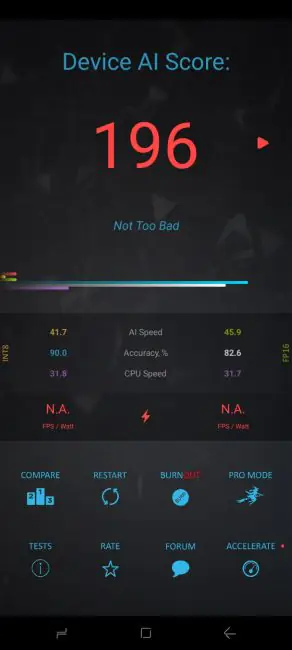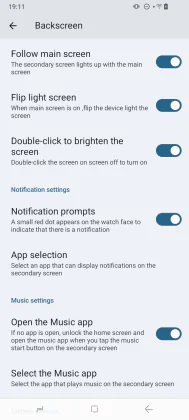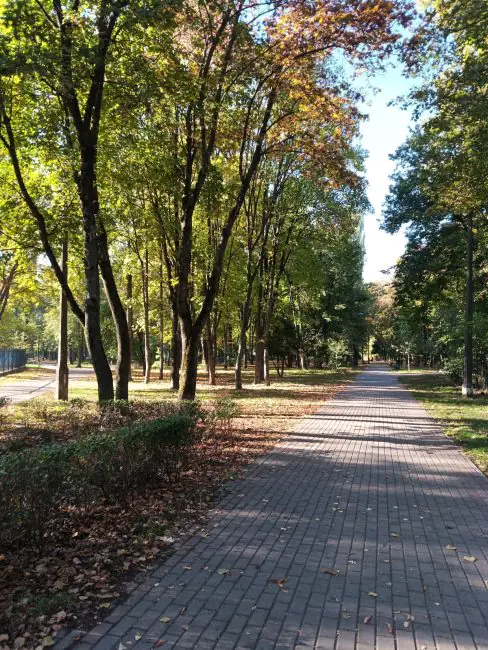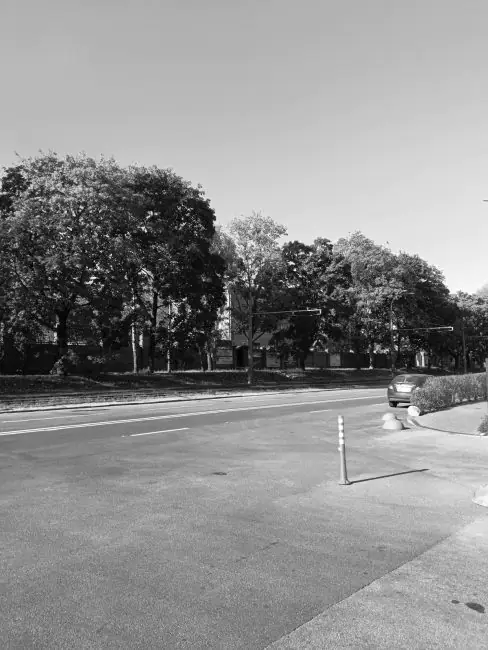© ROOT-NATION.com - Use of content is permitted with a backlink.
Today, we’re reviewing the Fossibot F109, a rugged smartphone from the Chinese brand Fossibot that combines innovative features with enhanced durability for demanding environments. The F109 is designed for users who require maximum reliability and performance in the toughest conditions. According to the manufacturer, the phone has IP68 and IP69K ratings, meaning it can withstand immersion in water, as well as resistance to dust and impacts. With a large battery capacity, the F109 promises extended battery life, which is particularly valuable for those working or traveling far from power sources.

Additionally, the device is equipped with a powerful processor, ample RAM with expandable options, and a spacious internal storage. In this review, we’ll take a closer look at the technical specifications of the Fossibot F109 and evaluate its capabilities.
Specifications
- Display: IPS; 6.745”; 720×1600 resolution (HD+); 20:9 aspect ratio; 89% display to body ratio; 225PPI
- Processor: MediaTek Dimensity 6100 Plus (MT6835V/TZB); 8 cores (2×Arm Cortex-A76 2.4GHz + 6×Arm Cortex-A55 2GHz); 6 nm process; Mali-G57 MP2 graphics
- RAM: 8 GB LPDDR4X with the ability to add virtual 16 GB
- Storage: 256 GB UFS 2.2
- Memory card support: microSD up to 2 TB
- Main camera: 50 megapixels; f/1.8; Hynix HI5021 sensor
- Front camera: 16 megapixels; f/2.45; Sony IMX471 sensor
- Camera for macro photography: 5 megapixels; f/2.2; Samsung S5K4E8 sensor
- Video recording: 2K@30FPS, 1080P@30FPS, 720P@30FPS, 480P@30FPS
- Battery: 10600 mAh; 18W fast charging
- Operating system: Android 14
- Communication standards: 2G, 3G, 4G (LTE), 5G
- Wireless technologies: Wi-Fi 6; Bluetooth 5.2; NFC
- Geolocation services: GPS, GLONASS, BeiDou, Galileo, Qzss
- SIM card slot: dual (2 nanoSIM or nanoSIM + 1 microSD)
- Sensors and gauges: accelerometer, electronic compass, proximity sensor, light sensor, gyroscope
- Protection: water, moisture, dust (protection class IP68/IP69K); shockproof housing.
- Dimensions: 176.1×81.7×18.5 mm
- Weight: 385 g
- Package contents: smartphone, 18W charger, USB-A to USB-C cable, SIM tray eject tool, documentation
Positioning and price
The Fossibot F109 is positioned as a smartphone for active and extreme use, targeted at adventurers, military personnel, and outdoor enthusiasts, designed to perform reliably in challenging conditions. It features a secondary screen on the back, customizable for various functions like displaying the clock, managing calls, viewing photos, or using tools like a compass. Additionally, it offers a glove mode, allowing users to operate the touchscreen even while wearing gloves—a feature likely to appeal to its target audience.

The manufacturer’s IP68/IP69K protection rating promises resistance to water jets, sand, and impacts. This seems credible, as all ports are sealed with protective covers, and the body is reinforced, particularly at the corners. The robust battery, durable build, and support for essential connectivity standards make it an appealing option for users who prioritize device longevity and battery life over high-end photo and video quality in everyday use.
You can buy Fossibot F109 on the official website or AliExpress. On the manufacturer’s official website, the price of the secure smartphone is $299.99, while on AliExpress it ranges from $189-200, excluding shipping and customs clearance.
Package contents
The smartphone comes in a sturdy, bright orange cardboard box featuring the brand’s logo.
The package includes:
- smartphone
- 18 W charger
- USB-A to USB-C cable
- SIM tray eject tool
- documentation.

It’s worth noting that earbuds are not included in the package. However, as a nice touch, protective films are already applied to both the main and secondary displays.
Design, ergonomics, build quality
The Fossibot F109 has a rugged, robust appearance, with a touch of mainstream smartphone aesthetics thanks to its glossy back panel and a decorative silver stripe. True to typical Chinese design, yet relatively restrained this time. The phone’s body is rubberized, with metal side inserts and a carabiner attachment. On the front, it features a large main display, while the back houses a secondary 1.32-inch circular display. The device measures 176.1 × 81.7 × 18.5 mm and weighs 385 grams.

The front panel features a 6.745-inch IPS display and a front-facing camera. The side bezels are reasonably slim, around 5 mm, while the top and bottom bezels are slightly thicker at 6-10 mm. The phone’s frame extends slightly above the display, providing some protection against screen damage if dropped. A glossy protective film is pre-applied to the display straight from the factory.
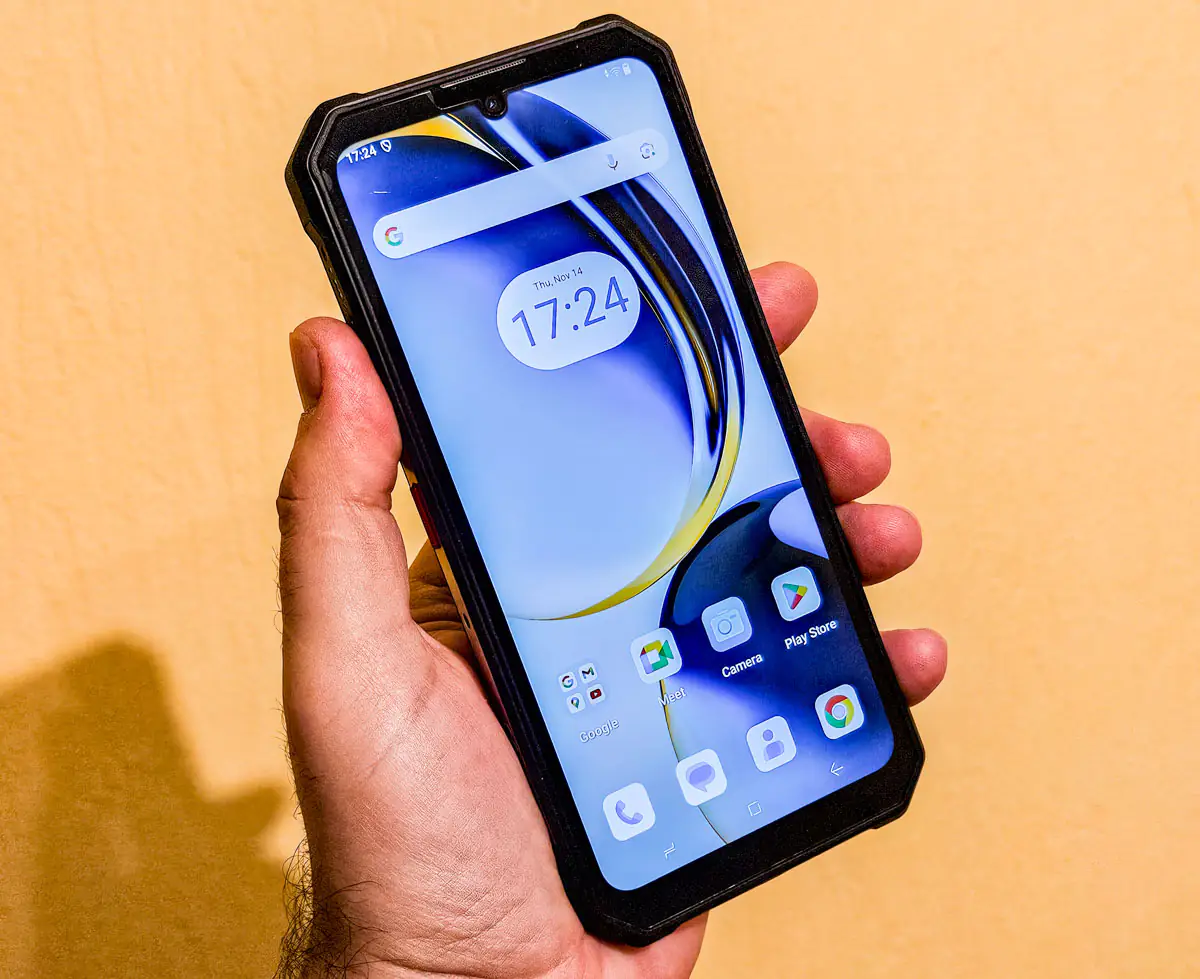
The back panel includes a secondary 1.32-inch circular display, a camera module, and a flashlight. This display can be customized for functions like music playback, handling calls, or serving as a compass.

The sides of the phone are made with metal inserts. On the right edge, you’ll find the volume buttons and a power button, which also houses a built-in fingerprint scanner.

On the left edge, there is a protected compartment with a flap that houses the SIM card and memory card slots, as well as a multifunctional red button.

In the phone’s settings, you can customize how the red button responds to single, double, or long presses. For example, it can turn on the flashlight or launch the music player. While this is a convenient feature, holding the phone often leads to accidental presses, and over time, the unintended activation of the flashlight can become annoying. However, the functional button can be deactivated if desired.

The smartphone features a dual SIM tray, allowing you to place two nano-SIM cards or one nano-SIM and a microSD card. A special tool for ejecting the SIM tray is included in the package. It’s worth noting that the tray is not very easy to remove, and if you don’t have long nails, you may need to put in a bit of effort to extract it. However, you can use the included ejector tool to make the process easier.

On the bottom edge, you’ll find a USB-C port for connecting the charger. Like the other ports, it is protected by a cover to prevent water and dust from entering.

The smartphone is quite bulky and heavy. On one hand, it feels reliable, doesn’t creak in your hands, and inspires confidence in its IP68 protection and shock resistance. On the other hand, it’s noticeably heavy and large. For an average-sized male hand, it might be somewhat manageable, but for me, my fingers weren’t long enough for comfortable one-handed use. The weight of the phone also causes hand fatigue quite quickly.
It’s not easy to slip a smartphone of this size into your pocket. However, if you’re taking it on a hike, you can attach it to a carabiner or store it in a backpack. Additionally, the phone’s protection class allows for underwater use at depths of up to 1.5 meters for up to 30 minutes. There’s even a dedicated menu for activating the camera for underwater filming.
Display
The smartphone features a 6.745-inch IPS display with a resolution of 720×1600 (HD+) pixels and a 60Hz refresh rate. The pixel density is 225 PPI. It does not support HDR. The display has decent resolution and pixel density but suffers from a low refresh rate.

Color reproduction is decent. The image is quite sharp, and the contrast is adequate, but there is still a slight “acidic” tint to the lighter colors, which affects the overall color balance.
The viewing angles are limited. At certain angles, colors and contrast can become distorted. However, there are no complaints about image sharpness, which remains excellent.

The display’s brightness is somewhat lacking on sunny days. Below is a photo taken in direct sunlight with the screen set to 100% brightness. For a smartphone designed to make life easier in extreme conditions, better brightness performance is expected. In field conditions, this could cause discomfort. However, in dark rooms or on overcast days, 80-90% brightness is usually sufficient for comfortable use.

The display performs well and recognizes up to 10 simultaneous taps, making it comfortable for fast and heavy text input. However, if the chosen language has a large alphabet, the keyboard design may not be the most convenient for typing. I often accidentally hit neighboring letters. All tests were conducted at an air temperature of around +16°C, so it’s hard to say how the display will behave in colder conditions.
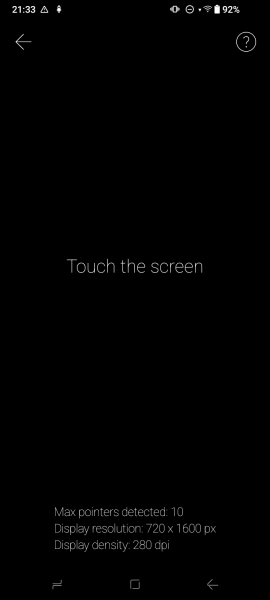
An interesting feature of the Fossibot F109 is the ability to configure the display for use with gloves. There is a dedicated section in the phone’s settings called Gloves Mode, which allows for better touch sensitivity when interacting with the screen while wearing gloves.

The Fossibot F109 offers two brightness settings: manual and adaptive. Additionally, users can configure the display to automatically lock after a certain period of inactivity, enable auto-wake, and choose a color scheme. A convenient feature is the ability to adjust the size and boldness of icons and fonts, which can be particularly useful in field conditions. You can also choose whether to display the content of app notifications, providing more customization for daily use.
An interesting feature of the Fossibot F109 is the second display on the back of the device. The refresh rate of this display is significantly lower than that of the main screen. The primary function of the secondary display is to provide quick access to various smartphone applications such as the camera, voice recorder, timer, music, compass, and clock. Users can choose the clock’s theme and set the display’s behavior—whether it operates simultaneously with the main screen or activates with a tap. This quick access to functions like the compass or music can be very convenient. Additionally, the secondary display helps conserve battery life, as it doesn’t require the larger screen to be lit up.
Overall, the main display is quite good. The picture clarity is high, and the touch response is quick, but the narrow viewing angles and low brightness are drawbacks. As for the second display, it takes some getting used to. So far, it feels more like a novelty than a truly essential feature. However, I don’t rule out the possibility that with more time and varied usage scenarios, I’ll form a more complete impression of how useful it actually is.
Hardware and performance
The smartphone is powered by the MediaTek Dimensity 6100 Plus (MT6835V/TZB) processor. This is an 8-core mid-range mobile chipset, announced in 2023. The architecture consists of 2 Cortex-A76 cores with a frequency of 2.4 GHz and 6 Cortex-A55 cores with a frequency of 2.0 GHz, built on a 6nm process. The Mali-G57 MC2 handles the graphics.
In terms of performance, the storage does not show particularly high speeds in benchmarks. However, for simple everyday tasks, this level of performance is sufficient. You wouldn’t expect this smartphone to offer blazing speeds or endurance for constant gaming. The results from tests such as AnTuTu and Cross Platform Disk Test are shown below.

At the default settings, the Fossibot F109 comes with 8 GB of RAM, which can be expanded up to 24 GB through settings. This virtual RAM expansion is designed to improve the overall performance of the phone, providing a slight boost in speed, particularly when multitasking or handling memory-intensive tasks.

During testing and benchmarking, the Fossibot F109 shows typical results for its hardware configuration. The test results in AI Benchmark and CPU Slowdown are provided below.
By default, the smartphone comes pre-installed with standard Google apps such as YouTube, YouTube Music, Gmail, and more. There is also an FM radio, which requires connecting headphones to the phone for use, and a standard ToolBag folder with useful apps like a compass, magnifier, protractor, and others.

Cameras
The cameras on the Fossibot F109 can be considered its weakest feature. While it’s understandable that you shouldn’t expect high-quality cameras on a rugged phone, the setup still feels underwhelming. The rear camera system consists of three modules: a main camera, a night mode, and a macro lens. The main camera has a 50 MP resolution, an f/1.8 aperture, and a Hynix HI5021 sensor. The macro module has a 5 MP resolution, an f/2.2 aperture, and a Samsung S5K4E8 sensor. The front camera offers 16 MP with an f/2.45 aperture and a Sony IMX471 sensor.

The rear camera can record video in 2K at 30 FPS, 1080p at 30 FPS, 720p at 30 FPS, and 480p at 30 FPS. The front camera supports video recording in 1080p at 30 FPS, 720p at 30 FPS, 480p at 30 FPS, and 288p at 30 FPS. Both cameras allow for a maximum 4.0x zoom for both photo and video capture.
Camera app
The camera app is standard and easy to use. The main modes are located in the bottom row, which can be switched between by swiping or tapping on their names. The top row contains additional settings for the selected shooting mode.
Photo modes available include: standard photo, portrait, night, pro mode, monochrome, high resolution (50 MP), beauty, macro mode, bokeh effect, PRO mode, and QR or barcode scanner.
The F109 camera lacks optical image stabilization for both photos and videos. For photos and videos, you can enable flashlight (flash), adjust the frame rate, enable geolocation, and more. Other settings are available, as shown in the screenshots below. The frame rate for regular video cannot be manually selected.
The front camera offers only basic selfie, standard video, Beauty mode, and monochrome photo modes.

Overall, the camera app works quickly, with smooth transitions between photo and video modes and camera switching. However, there are occasional issues with focusing and adjusting to lighting conditions. At times, the camera had to repeatedly reattempt to focus and select the right point.
An interesting feature of the Fossibot F109 is the underwater camera. It’s unclear why it’s not accessible through the main camera app, but it can be launched from the quick access menu at the top. In this mode, the touchscreen stops functioning. Shooting is initiated by a red smart button, and switching between photo and video is done using the volume buttons. To switch between the front and rear cameras, you need to press the volume buttons more firmly or lightly.
For convenience, photos can also be taken using the second display, which acts as a mirror. The photo resolution can be set in the system settings under the “Backscreen” section. The interaction between the camera and this feature could be clearer, as it’s not immediately obvious how to take a photo when the camera app is launched on the second display. It takes a bit of trial and error to figure out the process.
Photos and videos
In good lighting, whether outdoors or indoors, the photos are relatively decent. The zoom feature in the camera is functional but not impressive. At 4x magnification, the quality significantly deteriorates—images become blurry and grainy. The camera struggles with color accuracy, especially in low-light conditions, where the photos turn out somewhat dull and flat.
Macro photos, on the other hand, are quite impressive. They come out relatively sharp and vibrant for a phone of this type.
Monochrome photos and those with a bokeh effect bring to mind the 2010s and the trend for such shots. All that’s missing is sepia for the full throwback effect.
The purpose of the night mode is unclear, as the photos were similar to those taken in the regular shooting mode. The pictures were quite dark and noisy.
The front-facing camera takes good pictures, and in Beauty mode you can even smooth the skin a little. I advise you to set this effect to a minimum, because at the middle mark your nose will begin to merge with your cheeks.
The smartphone has no problems with video recording with the main camera, especially in good lighting conditions. The videos are not smooth and the color reproduction is not very good. There is a feeling of fading of the picture.
EXAMPLES OF PHOTOS AND VIDEOS IN FULL RESOLUTION
Sound
The sound quality of the Fossibot F109, based on my subjective assessment, is solidly a 3 out of 5. The phone has a single speaker, so the sound is not stereo and comes from a single point, creating a somewhat hollow effect. For comfortable viewing of movies or podcasts, you’ll need to turn the volume up to the maximum. As for music listening, the single speaker delivers flat sound with a lack of bass. However, it’s not surprising to expect limited audio performance from a phone in this category. If you connect headphones and tweak the equalizer settings, you can achieve a more satisfying sound quality.
During calls, the sound quality is good. I could hear the people on the other end clearly, and they had no trouble hearing me.
Communications and wireless technologies
The smartphone supports 2G, 3G, 4G and 5G. The supported bands are as follows:
- 2G GSM: B2/B3/B5/B8
- 3G WCDMA: B1/2/4/5/6/8/19
- 4G LTE FDD: B1/2/3/4/5/7/8/12/13/17/18/19/20/25/26/28AB/66
- 4G LTE TDD: 38/40/41
- 5G NR SA: N1/3/5/8/20/28/38/41/77/78
The F109 supports dual SIM functionality, and during testing, there were no issues with connectivity or mobile internet.
For wireless connections, the smartphone includes Wi-Fi 6 and Bluetooth 5.2. It also supports NFC for contactless payments. The wireless connections were established quickly and worked without any issues. Data transfer speeds are standard, and I have no complaints.

The phone supports GPS, GLONASS, BeiDou, Galileo, Qzss geolocation services.
Software
The smartphone runs on a clean version of Android 14. The pre-installed apps are minimal, limited to only the essentials, all from Google. The settings are fairly standard.
The phone offers several options for unlocking: password, PIN, pattern lock, fingerprint, and facial recognition. System navigation can be done with either three buttons or gestures.
One feature worth noting is the ToolBag folder. This is a standard collection of useful apps such as a compass, magnifier, and protractor. Interestingly, this folder also includes an alarm signal function, which activates a loud sound and bright visual indicators on the display. This could be useful for travelers in distress, allowing them to signal for help while waiting for rescue, especially given the phone’s large battery capacity.
The operating system is simple and intuitive to use, with a standard set of settings. I had no issues with system performance during testing.
Battery life
The smartphone is equipped with a 10,600 mAh battery. The package includes an 18W charger.

During testing, it took about 4 hours to charge the phone from 34% to 100%. A proper test of continuous usage wasn’t possible due to app crashes. However, real-world usage showed that the smartphone can easily last 2 days on a single charge, and potentially even longer. If multimedia and photo-taking are kept to a minimum, the phone lasted up to 6 days in a relatively idle mode. Overall, the battery life of the Fossibot F109 is impressive.

Conclusions
Overall, I have a positive assessment of the Fossibot F109 as a rugged smartphone. The build is solid and well-constructed, with a design that is understated yet comfortable to use, although the phone is a bit on the heavy side. For field use, it definitely proves its worth: the bright flashlight, easy access to the compass, second display, and programmable function button all contribute to convenience during outdoor activities. Additionally, the app for triggering visual and audible alarms in case of danger could prove to be very useful.

The only downside of this smartphone for outdoor use is the low screen brightness. When it comes to the camera, don’t expect top-tier quality for this category of rugged phones. You can take photos, including macro and underwater shots, though video quality will be below average. However, it will still capture pleasant memories. That said, don’t count on it for astrophotography. Overall, the smartphone performs well and is worth considering for extreme conditions.
Where to buy
- Official website – use the code YTROOTNA09 to purchase a discounted product at a price of $199.99
- AliExpress
Read also:
- CUBOT KINGKONG POWER 3 Rugged Smartphone Review
- Unihertz 8849 Tank 3S Rugged Smartphone Review
- DOOGEE S Punk Rugged Smartphone Review


















